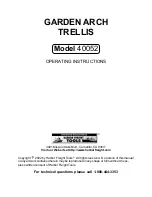
8
PRO MIXER DJX700
The built-in digital effects processor of your DJX700 can
process the MASTER signal, the input channels signal or the
microphone signal. Use the
SOURCE
selector
to select the
signal on which you want to run the effects. The
PROGRAM
display
located below shows the effect presets that can be
recalled by turning and then pressing the
PROGRAM
control
. The
LEVEL
control
is used to determine the volume of
the effects signal. Use the
EFFECTS ON
switch
to turn the
effects on and off.
Various effects are segmented into seven different groups,
offering such standard effects as reverb, delay, echo etc. as
well as additional filter and combination effects.
3. CONNECTIONS
Fig. 3.1: PRO MIXER DJX700 rear panel connectors
These are the
LINE
i. e.
CD
inputs to connect a tape deck,
CD or MD player etc. Unlike other channels, channel 1
features two line inputs.
The
PHONO
inputs for channels 2 to 4 are for connecting
a turntable.
The
GND
connectors ground the turntables.
With the
PHONO/LINE
switch it is possible to switch the
input sensitivity of the PHONO inputs 2 to 4 to line level.
This allows you to connect a tape deck or a CD player to
the PHONO inputs.
Fig. 3.2: PRO MIXER DJX700 rear panel connectors
The DJX700 features an integrated effects loop for the
connection of an external effects device. The MONITOR
signal is taken at the
SEND
output and routed, for example,
to a reverb processor. Thus, the signal at the SEND
connector is identical to the headphones signal and is
selected with the MONITOR CUE buttons
.
3. CONNECTIONS
left (signal B is slower). When the middle LED lights up, the tempi
are the same. The
TIME OFFSET
LED
below that displays
the signal A and B synchronisation. Should the middle LED light
up, the tracks are synchronised. Should the display move to the
left or right, the channels are not synchronised. The TEMPO
DIFFERENCE and TIME OFFSET displays are only active if the
tempi of both channels have been fixed in one of the ways
described.
+
When no signal is present (or when the signal level
is too low), the BPM display shows only dashes.
When the signal is present but can not be identified,
the display shows 160 BPM and then shows the
said dashes. The beat counter then attempts to get
another readout. Therefore, 160 BPM is no usable
value; rather, it is simply an error message when
the signal can not be analyzed.
To exit the SYNC LOCK or BEAT ASSIST modes, simply push
the SYNC LOCK button once more on both channels.
2.8 Internal effects processor
*53
())
0
Reverb
Big Plate
1
Reverb
Small Chamber
2
Reverb
Bright Room
3
Reverb
Voice Widener
4
Reverb
Phil’s Drums
5
Reverb
Short Delay
0
Delay
1/2 95 BPM
1
Delay
3/4 95 BPM
2
Delay
1/1 95 BPM
3
Delay
1/2 110 BPM
4
Delay
3/4 110 BPM
5
Delay
1/1 110 BPM
6
Delay
1/2 124 BPM
7
Delay
3/4 124 BPM
8
Delay
1/1 124 BPM
9
Delay
1/2 131 BPM
A
Delay
3/4 131 BPM
B
Delay
1/1 131 BPM
0
Echo
1/2 95 BPM
1
Echo
3/4 95 BPM
2
Echo
1/1 95 BPM
3
Echo
1/2 110 BPM
4
Echo
3/4 110 BPM
5
Echo
1/1 110 BPM
6
Echo
1/2 124 BPM
7
Echo
3/4 124 BPM
8
Echo
1/1 124 BPM
9
Echo
1/2 131 BPM
A
Echo
3/4 131 BPM
B
Echo
1/1 131 BPM
0
Flanger
Stereo Flanger
1
Flanger
Vintage Flanger
2
Flanger
Dual Phaser
3
Flanger
Rotary Speaker
4
Flanger
Stereo Chorus
0
Panning
Panning
1
Panning
Tremolo
0
Filter
Auto Filter
1
Filter
LFO Filter
2
Filter
Vinylizer
0
Sim/Dyn
Ultrabass
1
Sim/Dyn
Ultrafex
2
Sim/Dyn
Voice Changer
3
Sim/Dyn
Tube Amp
4
Sim/Dyn
Blues
5
Sim/Dyn
Radio Speaker
Tab. 2.1: Presets of the multi-effects processor




























